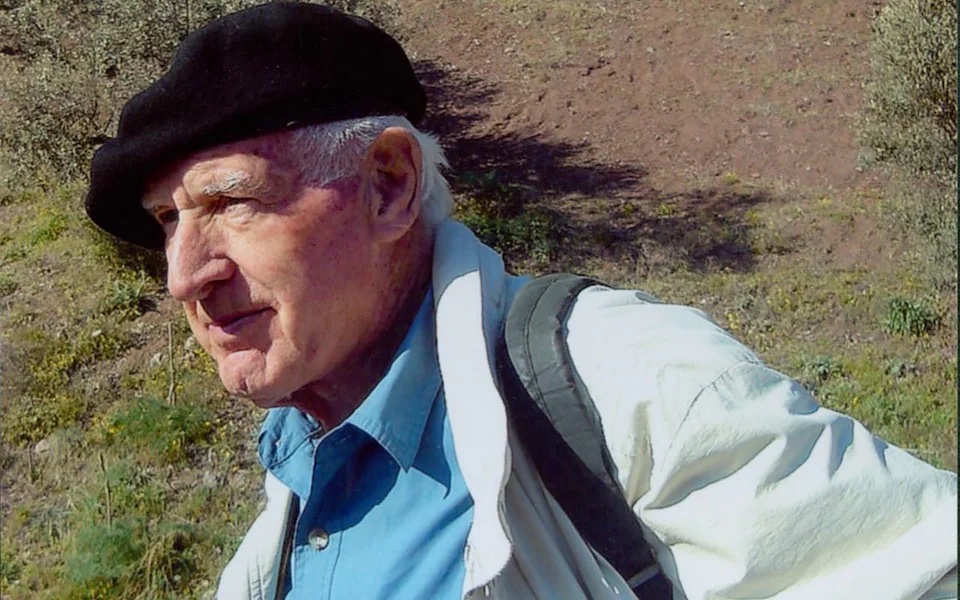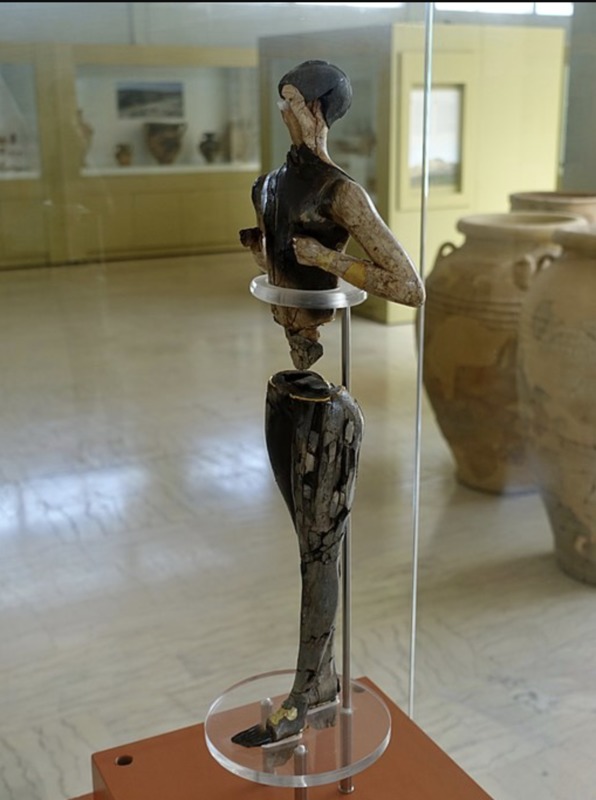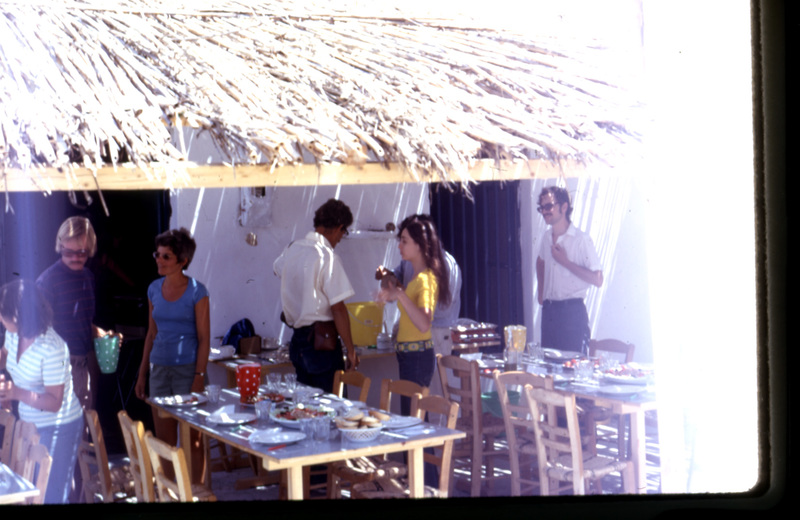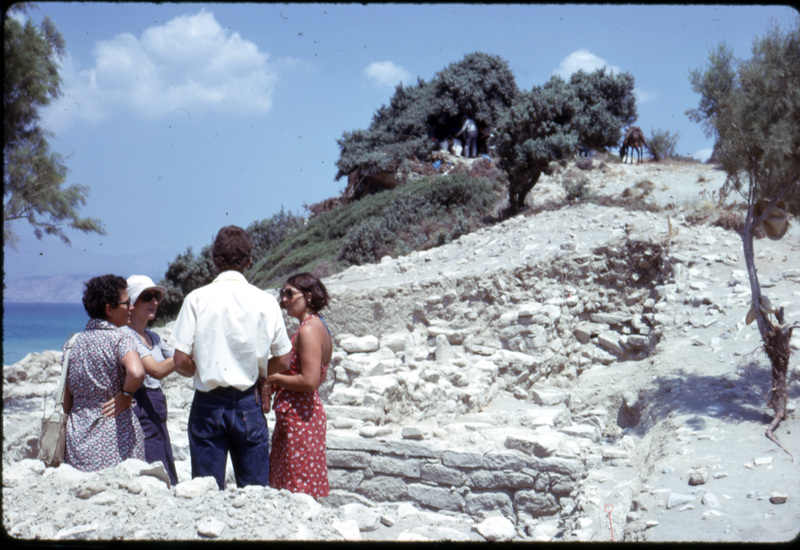Hugh Sackett and His Legacy

Leyland Hugh Sackett, known as L. Hugh Sackett, was widely renowned for his archeological talents that spanned his six-decade career. Sackett’s work garnered him a legacy not only as an archeologist but also as a teacher and classicist. Sackett worked very closely with the British School of Athens throughout his career where his excavation tactics were noted as both diachronic and precise. Scholars widely debate which of the excavations he led might was the most significant given the profound effect that so many of his digs have had on our modern knowledge of ancient Greek life.
Some of his more notable work includes the excavation of Lefkandi in Euboea which included discoveries from the Iron Age, or Dark Age, such as the Centaur from Lefkandi. Additionally, his work in Palaikastro in East Crete, from which we get the Palaikastro Kouros, has shaped our current perception of ancient Minoan Crete. These artifacts and their impact are prime examples of the effects that Sackett’s work has had on Greek scholarship.
The lasting impacts of his work can be seen on a more personal, academic level as well. Sackett published prolifically his whole career and as such was awarded the Archaeological Institute of America’s: Gold Medal for Distinguished Archaeological Achievement, and he has been the only schoolteacher to receive such an award. Additionally, he taught at the Groton School in Massachusetts for an impressive sixty-three years, where he impacted the lives of many young minds. His teachings in the field of classics and archaeology through Groton inspired many to go on to pursue such work themselves, including Sean Hemingway ‘85, the head of Greek and Roman Art at the Metropolitan Museum of Art and Jennifer Stager ’96, professor of art history at Johns Hopkins.
Posthumously, Hugh Sackett generously donated a collection of over two-hundred photographic slides to Rhodes College in Memphis, Tennessee. These photographs from the late 1950s all the way through 1980 give direct insights into the life of this renowned scholar and his archaeological exploration of Greece. The images include his own digs, geographic documentation of areas he excavated, and notably his work with colleagues Joseph and Maria Shaw.
Joseph and Maria Shaw’s work, particularly their work with Hugh Sackett, has revolutionized our current knowledge of the Aegean Bronze Age. Together they worked on excavating the site Kommos “the seaport of Minoan Phaistos and Hagia Triadha” exhibited in photos taken by Sackett in this collection. An exploration of Sackett's famed findings and work with the Shaws creates a holistic picture of the lasting legacy of Hugh Sackett's achievements.
Centaur from Lefkandi, Euboea
The centaur from Lefkandi is a prime example of a votive statue from the Geometric Period, dating to roughly 900 BCE. Sackett and other scholars have suggested that this figure represents Cheiron a centaur who is said to have been a tutor to the wise Achilles. Sackett’s work in excavation lets us know that this piece was found in two separate locations, intentionally broken before burial. The action of breaking the figure into two pieces is known as a chthonic ritual, indicating that the statue was meant to serve as a protector over the deceased. This piece is the one of the first representations of classical mythology seen in the ninth century.
Palaikastro Kouros
The Palaikastro Kouros, statue made of a mix of ivory, gold, and stone, likely served as a cult statue. It is one of the largest remaining figures from the Minoan culture and its composition, known as chryselephantine, made it a very visually distinct representation of the god Zeus. Sackett’s excavations found this statue smashed in several pieces over the course of three years (1987-1990) as a result of the ruination of the settlement in the LM IB period. The piece now rests in the Siteia Archeological Museum. Sackett’s excavation of this statue elucidates the role of powerful males in the Minoan elite culture.
Kommos Excavation Team
One of the more distinguished elements of Hugh Sackett’s legacy is his noted “breadth of interest”. When in 2014 Sackett was awarded the Gold Medal for Distinguished Archaeological Achievement, he was credited as one of the only remaining scholars who could publish on such a broad range of ancient Greek topics while remaining dedicated to his excavations and regional surveys—pictured in the “Through the Eyes of Hugh Sackett” collection. Here, Sackett has photographed the team with which he worked on the excavation of the Minoan site, Kommos in the Summer of 1976, including Joseph and Maria Shaw who later went on to receive the Gold Medal for Distinguished Archaeological Achievement in 2006.
Kommos
Joseph, or Joe, and Maria Shaw are pictured here in the white button down and blue patterned dress, respectively, looking out over a coastline archeological site in Kommos. Scholars note that the two’s joint work in Kommos with Hugh Sackett is among their most prestigious. Their work here began in 1976 and has continued throughout both of their respective careers. Publications, notably from the Princeton University Press, that came from these joint efforts give us much of what we know today about the Bronze Age and Iron Age on Crete. These excavation efforts, spearheaded by Hugh Sackett, elucidate the extent to which Kommos served as a major hub for trade to contacts both East and West of the Aegean.
Kommos Excavation
Together, the Shaw’s work in in port of Kommos has revealed the location to have been a commercial center with a large-scale harbor. Joseph Shaw’s work, specifically his publication Kommos: a Minoan harbor town and Greek sanctuary in southern Crete, gives the “diachronic historical importance of Kommos” and an account of the thirty years of excavation, joined by Hugh Sackett. Through the British School at Athens, Sackett’s work in Kommos in conjunction with the Shaw’s is well documented in Roman Kommos: A Reappraisal.




